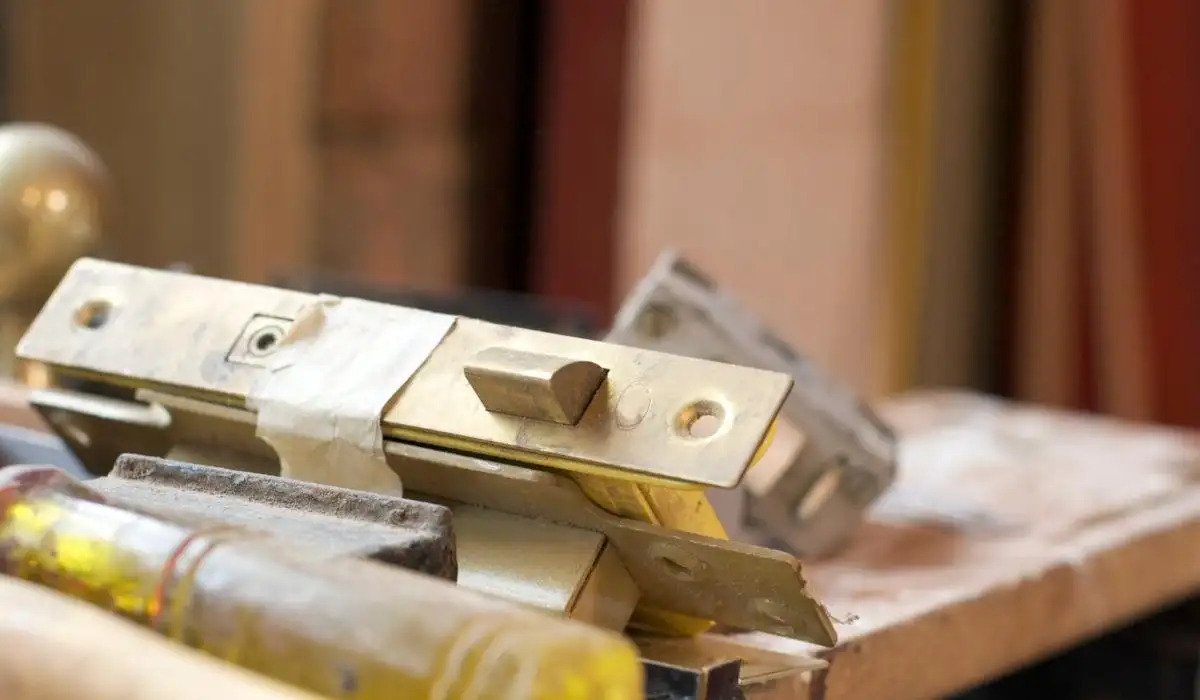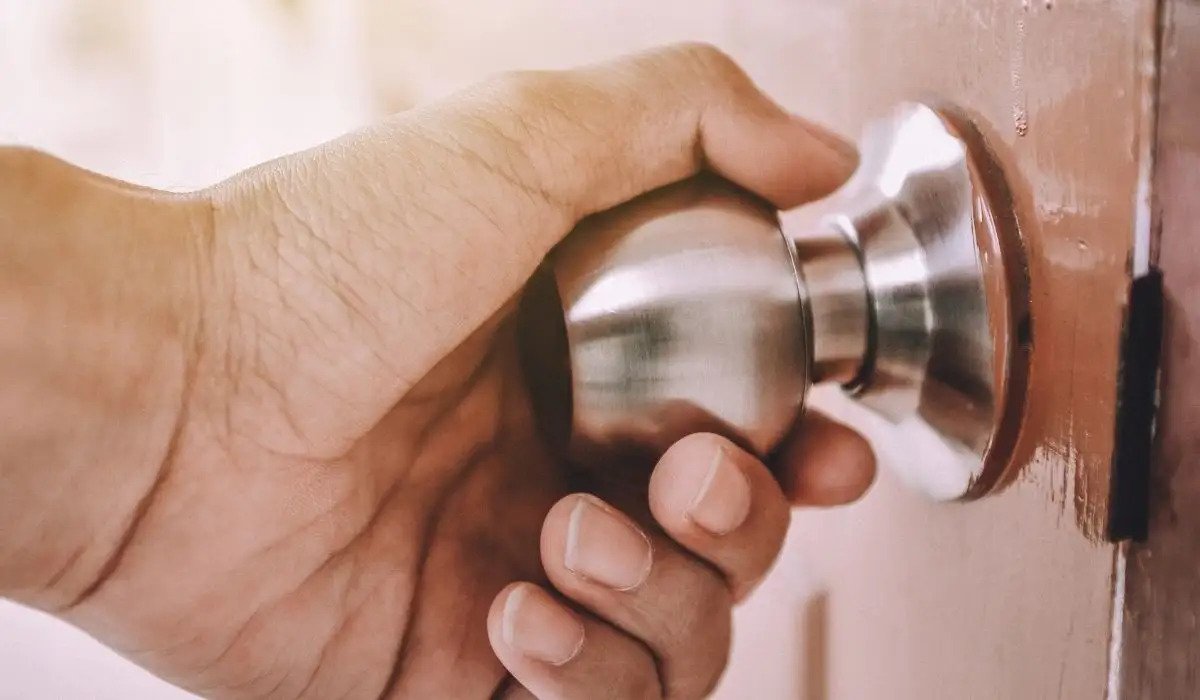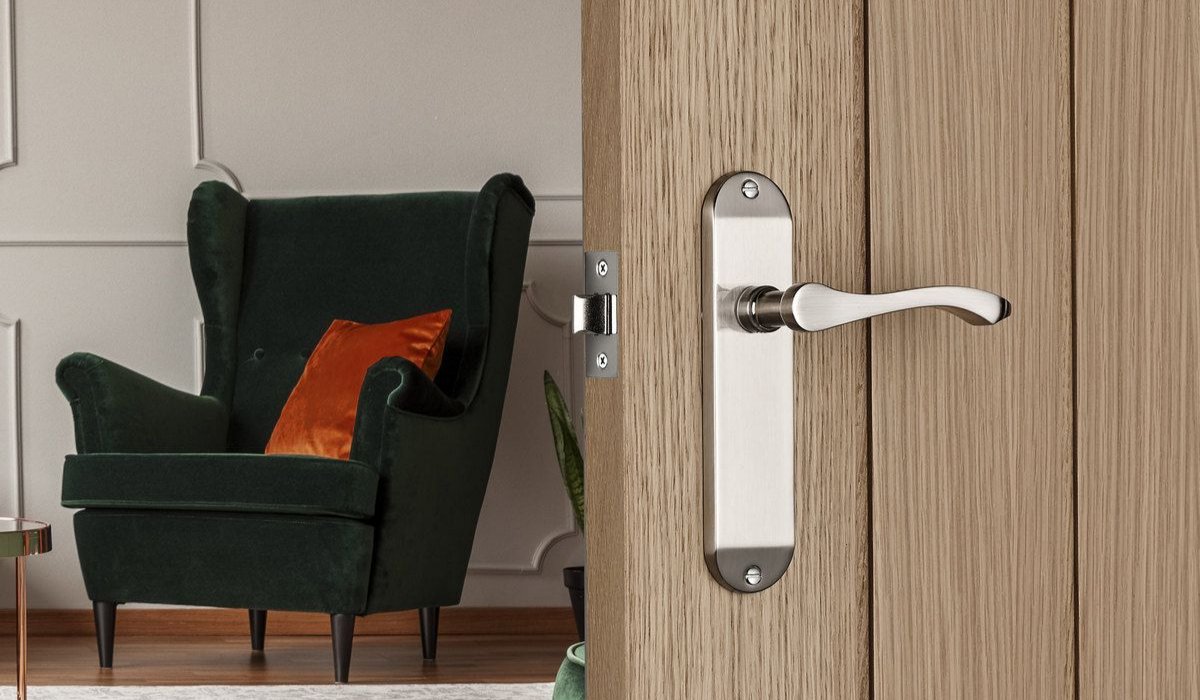When trying to tell a 5 lever mortice lock from another, there are often some identifying markers you can look for, such as:
- A five lever mortice lock will sit within the door frame
- It will be installed in a wooden door, as composite doors, aluminium doors, and uPVC doors can’t house these door locks
- The actual words engraved on the lock
- You’ll be able to open the lock with a key from both the inside and outside of the house.
OTHER TYPES OF FRONT DOOR LOCK YOU COULD HAVE
If you’re not sure what type of front door lock you have, here’s a description of some of the others you might have.
THE MULTI POINT LOCKING SYSTEM
Used in both wooden and uPVC doors, the multi point locking system is distinguishable by the fact that it has three locking points; one by the lock, one on the top, and one at the bottom.
As with the mortice locking mechanism, you need a key to unlock it from either side.
THE RIM AUTOMATIC DEADLATCH
Also known as the night latch, this will usually be mounted on the surface of the door, with the lock’s cylinder connected to the door’s keyhole outside.
It is installed in isolation as it doesn’t need to be paired. However, it’s a relatively insecure option, as it’s not concealed within the door frame.
Another big indicator that you have a rim automatic deadlatch would be that your door is made of wood, as a lever mortice deadlock and deadlatch combo can’t be fitted to composite doors or any other type of door material.
THE EURO CYLINDER
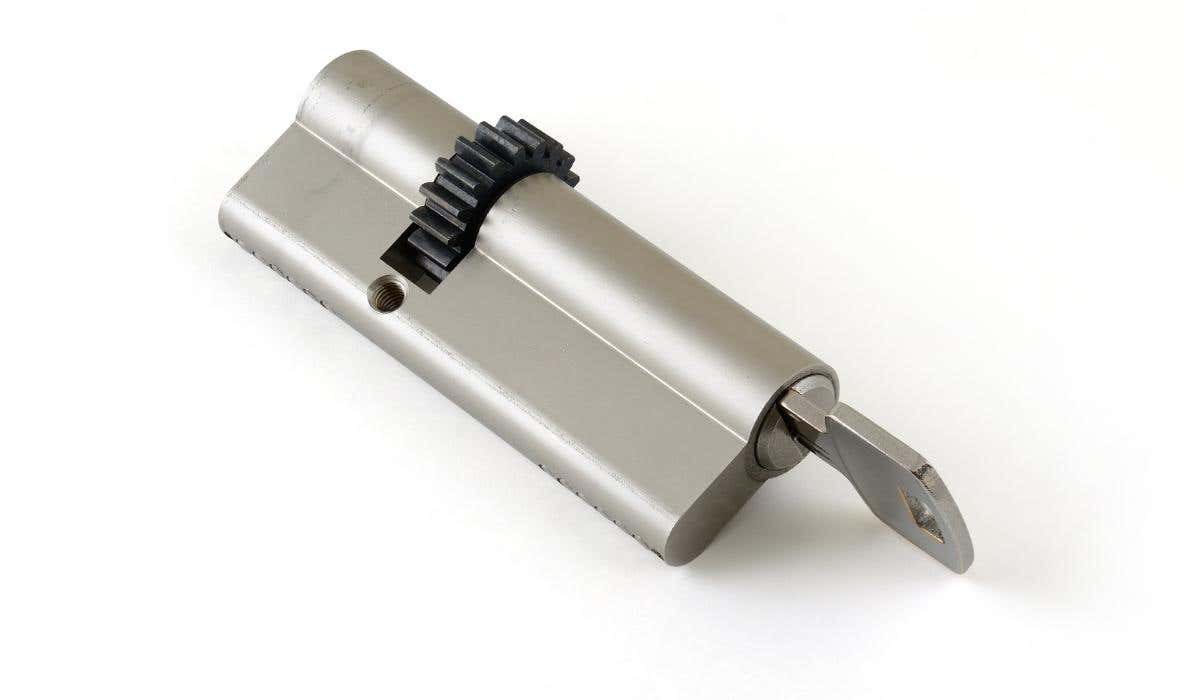
The design of a euro cylinder is very different from a mortice lock, as it features a central revolving ‘cam’. With a euro lock fitted, the key is inserted and turned, moving the cam to lock or unlock the door, depending on which way it’s moved.
The euro-lock is fitted in combination with a euro mortice door lock, with the moving cam then turning the deadlock bolt inside or outside accordingly.
With a Euro lock fitted, the key is inserted and turned, moving the cam to lock or unlock the door depending on which way it’s moved.
THE ELECTRONIC DOOR LOCK
If you’re one of the growing numbers of people who have what can be described as a ‘smart home’, there’s a chance that you might have electronic door locks as the primary security for your property.
Operated by keypad or smartphone, they remove the need to have any kind of physical, but they’re not quite as secure as they seem.
The drawback here is that like anything that’s internet-connected, they’re vulnerable to hacking (just like your email password login), making them much less secure than a mortice lock.
WHAT DOES BS3621 MEAN?
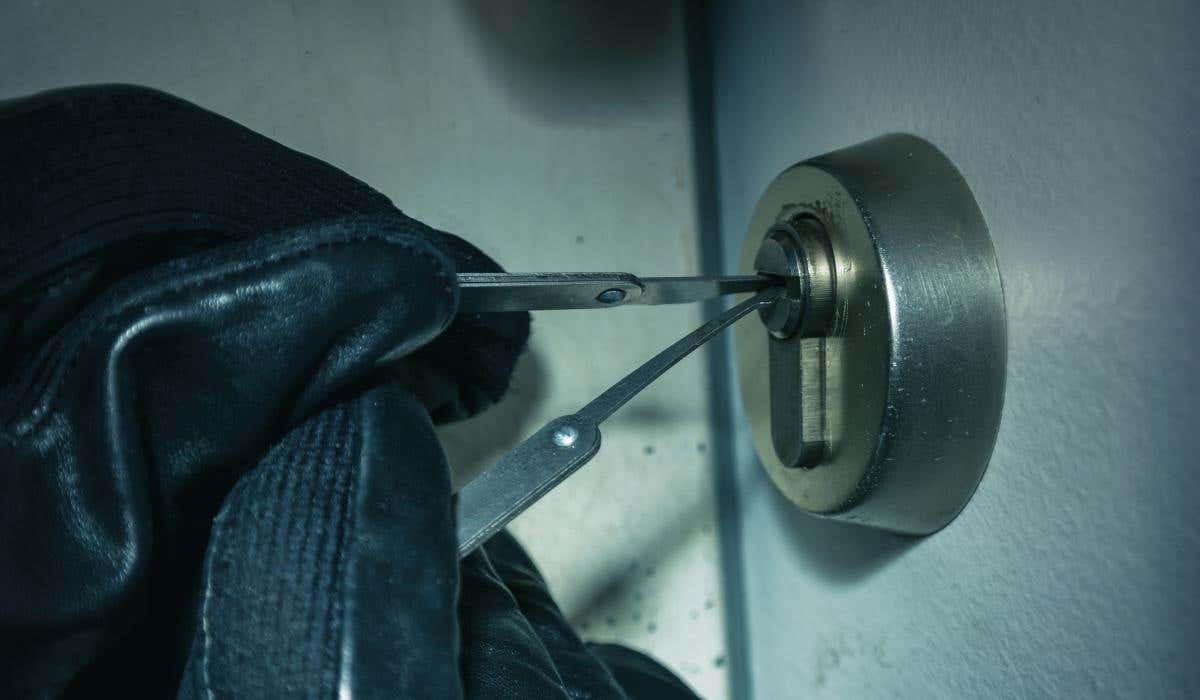
This is quite an important aspect to consider when talking about door locks, as this approval marking means that the lock in question meets British Standards Institution (BSI) criteria, having been officially tested to withstand drilling and lock picking.
If you do have a BS3621 approved door lock, there’s a good chance that it will display the appropriate kite mark stamped on the faceplate.
However, an indication that you don’t have a BS-approved mortice lock would be if it has a night latch – something that’s often added for extra security.
HOW DO THEY DIFFER FROM 3 LEVER MORTICE LOCKS?
The obvious answer to the question is clearly that a five lever mortice deadlock has two extra levers, but it’s the security ramifications of this that really matter.
Usually used on external doors, it’s not able to be opened from outside without a key when locked. Their secure nature is the reason why insurance companies specify them for external entrance doors.
3 LEVER MORTICE LOCKS ARE NOT AS SECURE
You’ll usually find 3 lever mortice locks used where security is less of an issue e.g. on internal doors that connect together two already areas like your house and your garage.
Insurance companies also don’t require that you use insurance-rate locks internally, which is a three lever mortice will suffice.
Because of the fact that the 3 lever mortice lock has 2 fewer levers, means that it’s less secure. The prospect of key duplication increases – hence the reason why you won’t find a BS3621 approved three-lever product.
HOW DO THEY DIFFER FROM SASH LOCKS?
You’ll also often find sash locks fitted to external wooden doors, which can also be described as mortice locks. However, they differ in one fundamental way.
While a 5 lever mortice lock won’t have a latch to open and close the door, a sashlock will, but as mentioned, the latch makes the lock less secure.
OTHER BENEFITS ASSOCIATED WITH 5 LEVER MORTICE LOCKS
If you have a 5 lever mortice lock in your wooden door that has the British standard kitemark, then you get a range of advantages, which include:
- Built to last – to call your average 5 lever mortice door lock durable is something of an understatement, as they’re about as long-lasting a product as you’re likely to find.
- Components can be replaced – maintenance costs for this kind of external wooden door lock are reduced, thanks to the fact that most of the inner workings can be replaced part by part, meaning they can be repaired instead.
- You can’t reach in and open it – one of the reasons why mortice locks are more secure than some is because it’s not possible for burglars to unlock one from outside by reaching in through a broken window.
- Harder to break than euro cylinder locks – burglars are known to break these types of locks using an act known as lock snapping. This is not something you’ll have to worry about it with a mortice lock.
- It can be keyed alike – this basically means that you can use the same key in multiple locks if required.
HOW MUCH DOES A 5 LEVER MORTICE DEADLOCK NORMALLY COST?
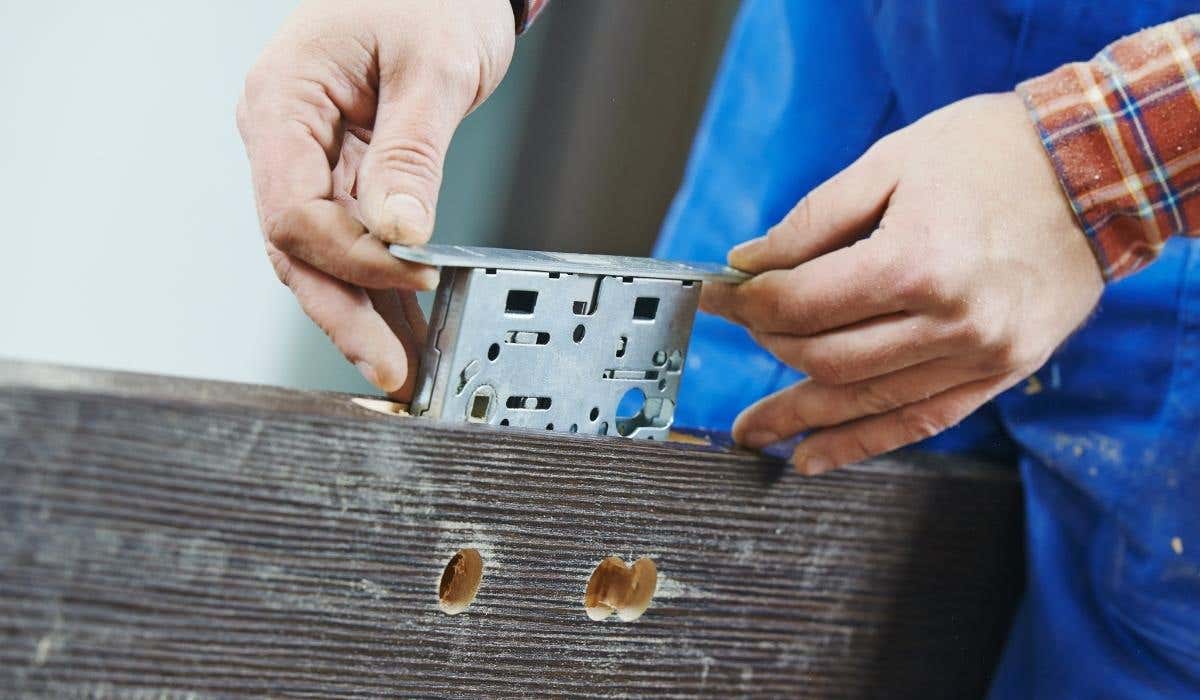
Well, the actual dead locks themselves are surprisingly inexpensive, with a good quality brand costing less than £10 in most cases.
In fact, by far the biggest part of the price is the installation itself, which can be as high as £100-£200.
However, it’s important to determine whether the locksmith you use also charges a call-out fee on top of that, as this is sometimes not included.
However, if you’re able to fit it yourself, the price of getting mortice deadlocks (complete with hard plates and keys) for wooden door types is very reasonable indeed.
SO, WHAT’S THE BEST LOCK TO HAVE FITTED TO YOUR FRONT DOOR?
There’s a reason why BS-approved mortice deadlocks are preferred by insurance companies and that’s because they’re essentially the safest kind of lock to have because of the added security they offer.
They offer many benefits, but the fact that they’re harder for burglars to get past makes them the lock of choice for homes and businesses across the UK.
Sure, this only applies to wooden doors and different non-wooden door types will require a compatible option, but if you do have a timber door, they should be your number one choice.

